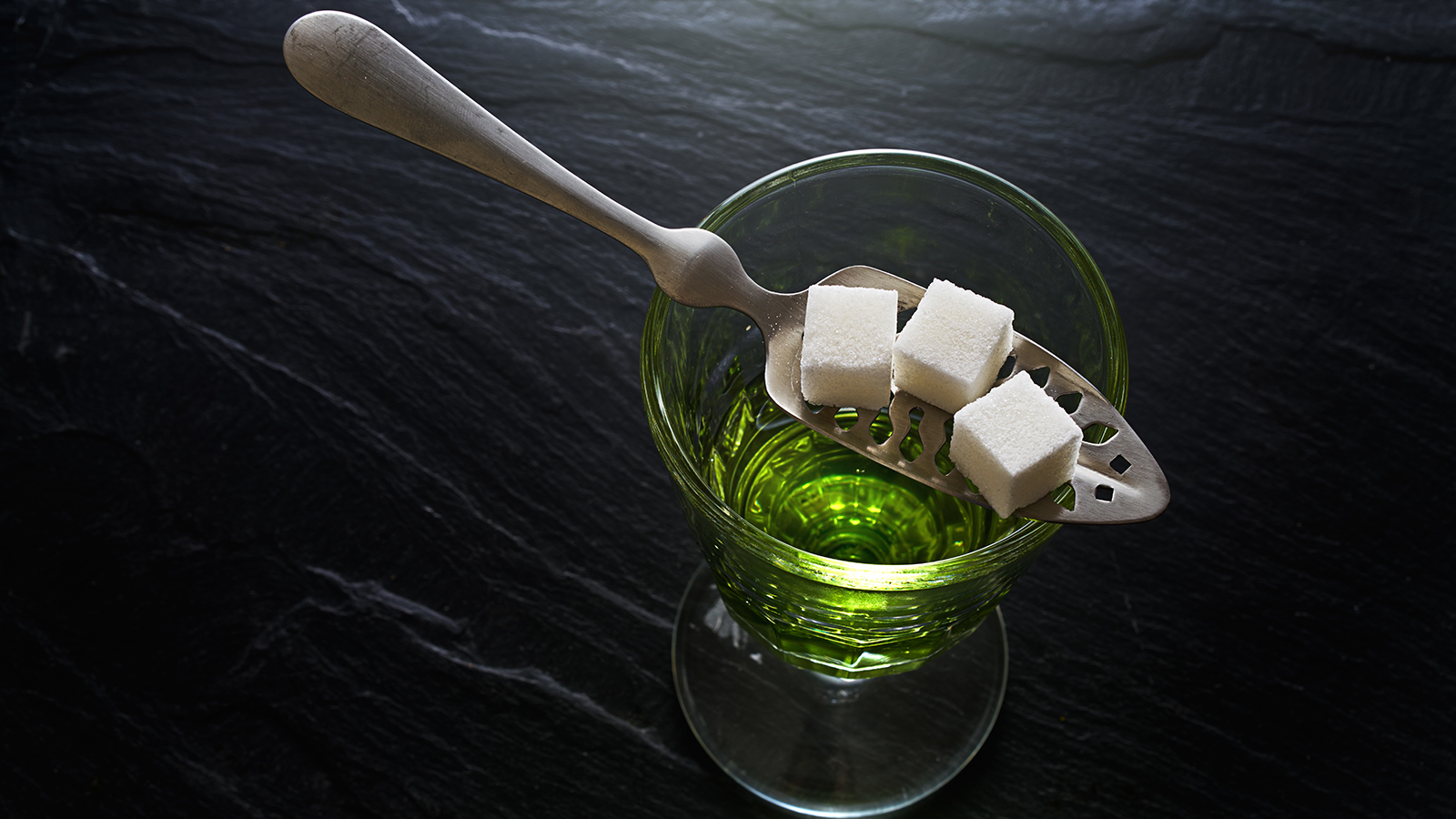
Absinthe, a high-proof anise-flavored spirit, may have the naughtiest reputation in the spirits world. Its mere mention evokes images of seductive green fairies, bursts of artistic creativity, and blithe stupors. A century-long ban will do that to a spirit’s good name.
Blamed for a slew of social ills, from madness to murder to mere lollygagging, absinthe became one of the first victims of the temperance movement. The charges were largely trumped up. Nevertheless, the U.S. and most of Europe banned its sale and manufacture by 1915. So when the spirit, ostensibly of Swiss origin but made popular in fin de siècle Paris, legally reappeared here in 2007, it returned with the excitement of a long-forbidden pleasure.
Alas, despite the hype, absinthe is not likely to bring on hallucinations, nor make you paint like Van Gogh. Whether you consider the lack of hallucinatory visions to be a plus or a minus, absinthe is worth experiencing for the taste alone. Most whisky lovers first discover absinthe in the form of a cocktail, where a few drops can go a long way. In the classic Sazerac cocktail (basically an Old-Fashioned made with Peychaud’s bitters and absinthe), you simply coat the inside of a rocks glass with absinthe and pour the rest back in the bottle, lending just a wisp of anise, absinthe’s most prominent flavor. The Sazerac and other absinthe cocktails survived absinthe’s long ban thanks to legal, lower-alcohol substitutes like Pernod and Herbsaint pastis, which have a similar flavor.
Since absinthe’s legalization, Pernod revived its original recipe, using wormwood, a plant that contains the psychotropic ingredient thujone in very small quantities. However, the U.S. government requires that absinthe be rendered thujone-free, defined as less than 10 parts per million. That’s why U.S. absinthes are definitively hallucination-free. Nevertheless, absinthe is traditionally very high in alcohol—even more so than most cask-strength whisky—so it’s best enjoyed in small quantities.
Andrew Auwerda, president of Philadelphia Distilling, began producing his Vieux Carré absinthe, among the first of the modern American era, to take advantage of a silent still. Since its 2008 debut, Auwerda says their customers have evolved from, “…the people who thought they’d get a high to mixologists and cocktail aficionados who appreciate its authenticity and complexity,” compared to pastis.
The classic way to drink absinthe involves a certain amount of ceremony. Iced water is poured over a sugar lump resting on a flat, slotted, decorative spoon set atop a small pour of absinthe. As the sweetened water chills and dilutes the absinthe, it creates an unusual effect called the louche—which turns clear green absinthe into a milky white-green liquid.
Whether you take your absinthe in a whisky cocktail or through the time-tested drip method, the range of botanicals, including hyssop, melissa, lemon balm, salvia, coriander, juniper, and, of course, wormwood (a sort of bitter tarragon note) offer as much flavor diversity as any style of whisky. In short, you’ll see that absinthe isn’t a one-note anise samba. We sampled a selection and found the experience left us feeling not so much naughty as nice.
7 Absinthes for Whisky Lovers to Try
Grande Absente—69%, $65
Light green, nearly yellow in color, with oily, savory, almost buttery notes and a wormwood finish.
Kübler—53%, $65
This relatively low-proof Swiss version is clear in color, fruity, and floral, with hints of Good & Plenty candy and wood, with an oily finish.
La Fée Absinthe Parisienne—68%, $50
Reintroduced the drink to France after the ban. Bright green, it is particularly woody, with fruit notes as well as a chalky finish.
Lucid—62%, $60
The first real absinthe to return to the U.S. after the ban. A nuanced mix of anise, fennel, and wormwood.
Mata Hari—60%, $40
In the archetypal Bohemian style: light in color with underplayed anise. The palate is spicy, with mint and sage, and includes caramel, nuts, and some bitter wood.
Pernod Original Recipe—68%, $60
Made with a brandy base instead of grain alcohol, this offers mint and menthol, with a bit of citrus and tarragon.
Vieux Carré—60%, $60
Deep green in color, it is sweet, with a minty, piney, eucalyptus bent, plus citrus and candy. Very approachable.






